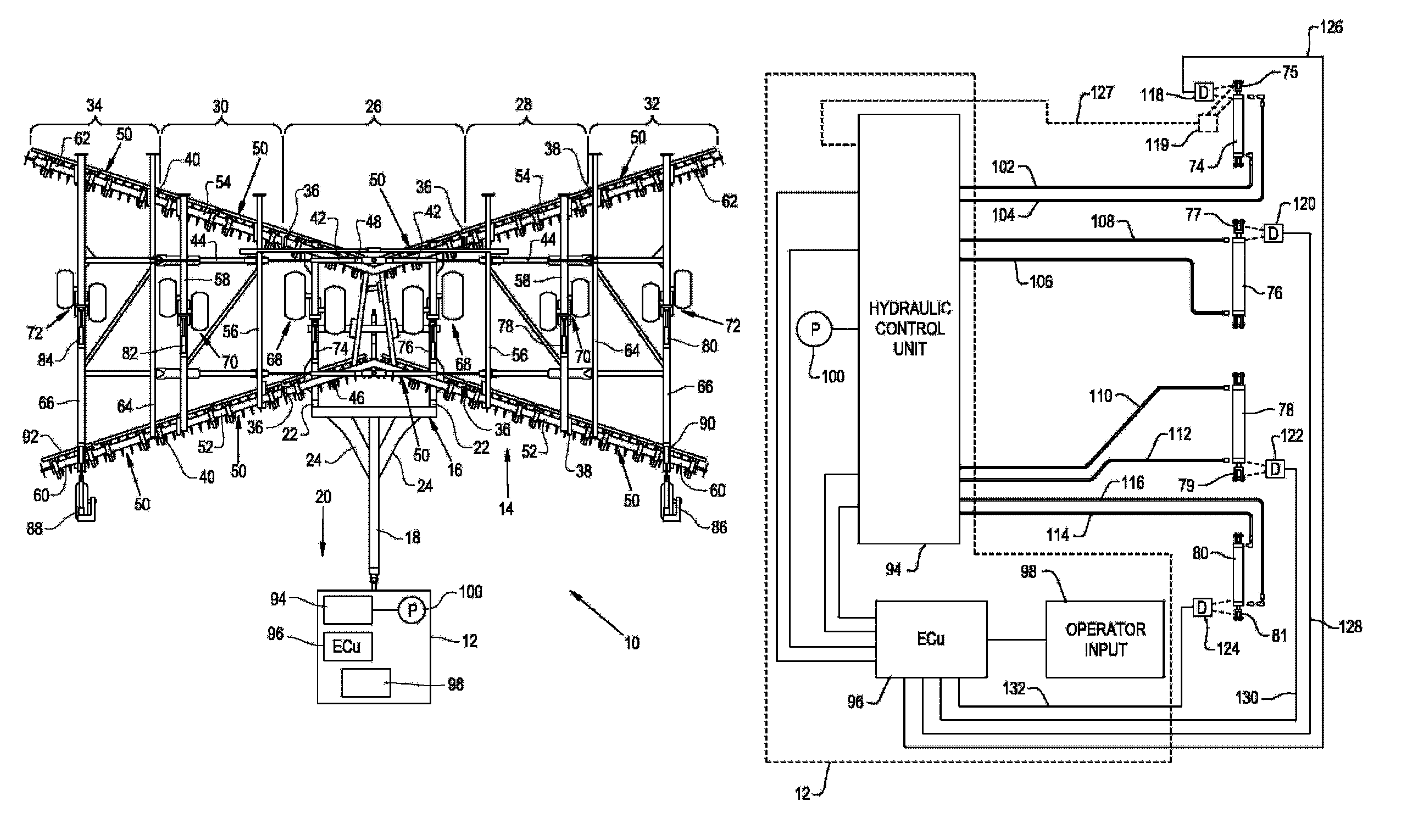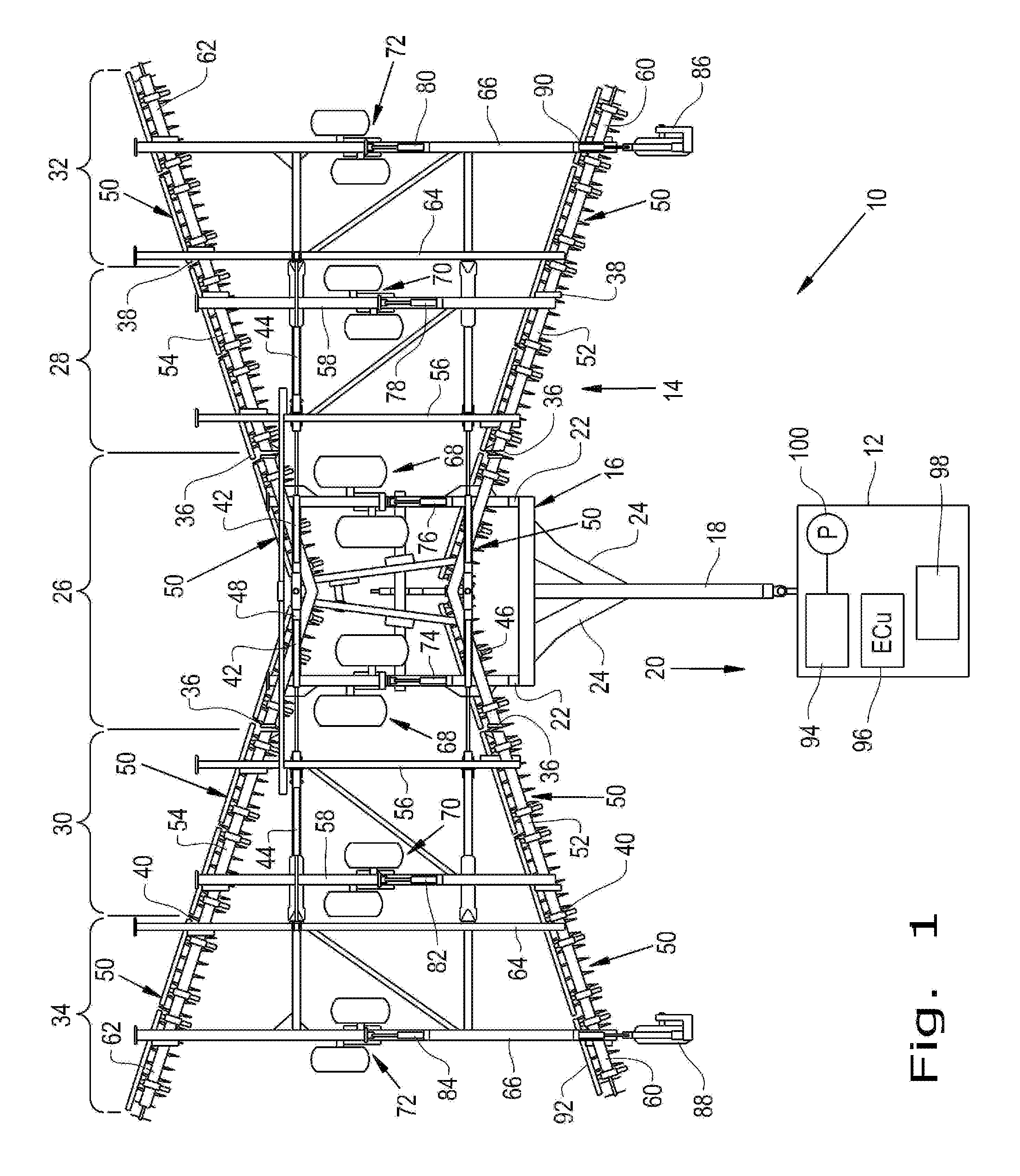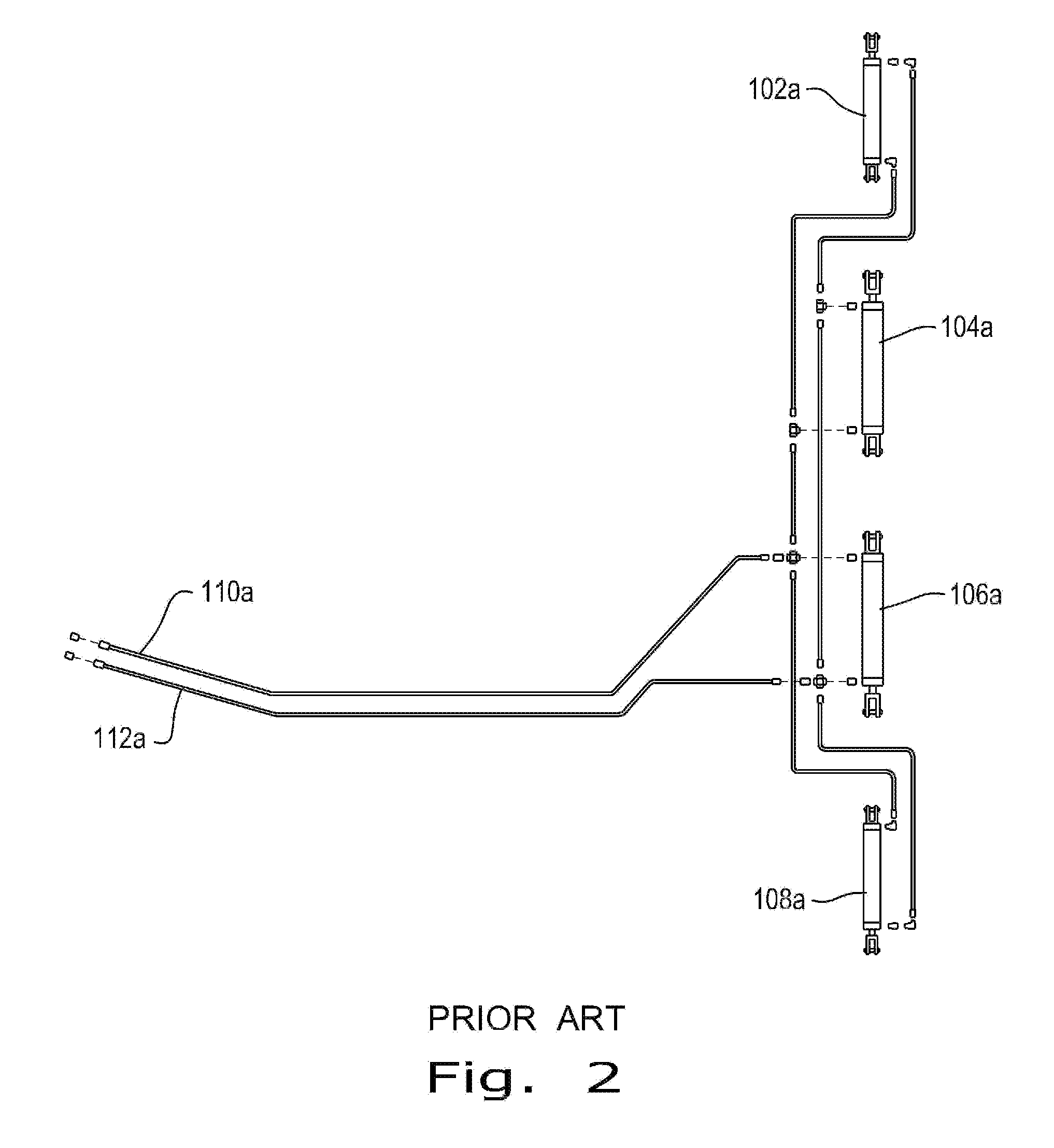Apparatus and method for air removal in tillage implements using three way valves
a technology of tillage implements and air removal methods, applied in the field of agricultural implements, can solve the problems of reducing the efficiency and speed with which the particular task is accomplished, the difficulty of having a level positioning of the implement, and the criticality of having a uniform and level tool contact with the soil, etc., and achieves the effect of effective air removal
- Summary
- Abstract
- Description
- Claims
- Application Information
AI Technical Summary
Benefits of technology
Problems solved by technology
Method used
Image
Examples
Embodiment Construction
[0020]Referring now to the drawings, and more particularly to FIG. 1, there is shown a tillage apparatus 10 which generally includes a tractor 12 shown schematically and an agricultural tillage implement 14 for tilling the soil prior to seeding. It should be noted that many different tools may be employed with the tillage implement 14 beyond the embodiment shown.
[0021]Agricultural tillage implement 14 is configured as a multi-section field disk ripper 14, and includes a carriage frame assembly 16. Carriage frame assembly 16 is the section that is directly towed by a traction unit, such as agricultural tractor 12. Carriage frame assembly 16 includes a pull hitch 18 generally extending in a travel direction 20, and forward and aft oriented carrier frame members 22 which are coupled with and extend from pull hitch 18. Reinforcing gusset plates 24 may be used to strengthen the connection between pull hitch 18 and carrier frame members 22.
[0022]The tillage implement 14 has a center secti...
PUM
 Login to View More
Login to View More Abstract
Description
Claims
Application Information
 Login to View More
Login to View More - R&D
- Intellectual Property
- Life Sciences
- Materials
- Tech Scout
- Unparalleled Data Quality
- Higher Quality Content
- 60% Fewer Hallucinations
Browse by: Latest US Patents, China's latest patents, Technical Efficacy Thesaurus, Application Domain, Technology Topic, Popular Technical Reports.
© 2025 PatSnap. All rights reserved.Legal|Privacy policy|Modern Slavery Act Transparency Statement|Sitemap|About US| Contact US: help@patsnap.com



